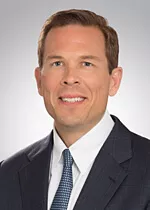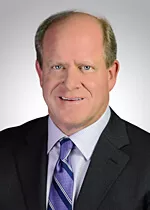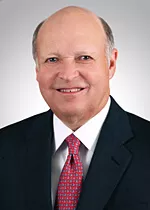Capital Corner: GSEs make the switch to SOFR, life companies continue to look for new opportunities
Please note: Today, NorthMarq’s Capital Corner moves to a monthly publication schedule, but continues its coverage of each capital source’s lending appetite and outlook for the coming weeks.
As we near the end of the third quarter, we are experiencing the traditional ramp-up in transactions that come early in the fourth quarter. Frankly, earlier this year, we weren’t sure we would experience anything traditional in 2020, so this a welcome relief.
Two transitions to note this month: After a two-year transition, the GSEs have officially moved away from the LIBOR index and switched to the new SOFR on Sept. 1.
The other transition that occurred this month was a move back into schools and back into some office settings. With the change from summer to fall, most lenders are ramping up activity, looking to fill their investment pipeline and achieve as-close-to-normal-as-possible YE results.
What is SOFR?
The Secured Overnight Financing Rate (SOFR) is based on actual transactions in the U.S. Treasury repurchase (repo) market, one of the largest markets in the world. This is the market where borrowers can sell their U.S. Treasury bond assets to investors with a promise to repurchase them the following day, thus effectively creating an overnight loan where the collateral is U.S. Treasury bond assets.
The New York Fed publishes the SOFR Averages and SOFR Index on the New York Fed’s website daily, shortly after the SOFR is published at approximately 8:00 AM EST.
Life Companies
With the competition remaining heated for multifamily product and industrial product in short supply, life companies are moving to explore more opportunities in the retail and office sectors, especially where strong sponsors have been able to retain stable rent collections and essential tenant mixes. In many states, restaurant occupancy has increased over the summer, more businesses reopened for in-person customers, and offices started reopening to more employees.
This anecdotal evidence, along with data points showing less reduction in rent payments than originally expected, has led life companies to broaden their reach into well-located, well-tenanted retail. While still selective, many life companies are finding relative value after researching the underlying fundamentals of the properties. In retail, the change is a bit more evident as the push to open dining and service options, as well as other health and entertainment businesses are helping define the properties with a good tenant mix for the future.
For office properties, many companies rounded Labor Day with pent up demand to return to normalcy of in-person work environments. The Zoom fatigue has fully set in, and in many states, a return with social distancing and mask-wearing seems to be the best-case scenario. This offers life companies the opportunity to invest in properties where the sponsor received consistent rent payments and the properties, particularly suburban office, are poised to welcome employees back to their desks.
Freddie Mac
Freddie Mac officially transferred their floating rate business from LIBOR to SOFR (“Secured Overnight Financing Rate”) based on September 1. While the mechanics of floating rate loans will be processed the same, the biggest differences in SOFR from LIBOR are the actual rate and current cost of caps. SOFR is currently trading inside of LIBOR, but is experiencing a higher cost for caps. This is expected to level off in time as SOFR becomes the new norm.
While almost 90 percent of all loans financed serve moderate and low-income families, Freddie Mac is taking their lead towards affordable housing even further by introducing their new Social Bonds. These bonds will continue to support those same families, but will now also include specialized affordable housing developments and Minority and Women-Owned Business borrowers. This increase in liquidity will help social impact institutions further provide capital for underserved communities, all the while attracting socially-minded investor capital.
Fannie Mae
As summer comes to a close, Fannie Mae is looking forward to a busy fall. Interest rate stability and record-low note rates have become themes in recent months as transactions continue to achieve note rates at and below 2.50% on a routine basis. The best way to improve pricing even further is to utilize Fannie Mae’s Green Programs, and the amount of Green business currently in our pipeline reflects this pricing advantage. Given the rate stability and record-low note rates, volumes remain steady and growing.
As the fourth quarter begins, Fannie Mae has officially transitioned to SOFR indexed floating rate loans. This change will not materially impact any of our floating rate products, terms, or processes.
FHA/HUD volume remains at record highs
The volume of FHA transactions remains at record high levels and is expected to continue for the foreseeable future. We have experienced some minor slowdowns in processing times but, in general, FHA has adjusted well to this significant increase in activity, and they are keeping deals moving at a steady pace. FHA’s fiscal year ends on September 30, so we expect there may be some slight disruptions to transaction flow as the end of the month nears.
Since the revocation of the “three-year rule” in the first quarter of 2020, the demand for 223(f) refinances continues to grow. FHA is now a great option for a permanent loan on a newly constructed multifamily asset. We are also experiencing a steady interest in 223(a)(7) and IRRP transactions as borrowers are capitalizing on this low interest rate environment by accessing these FHA loan modification programs. One of the driving factors of this surge in FHA activity is the historically low interest rate environment we are experiencing. Current rates for a refinance transaction are approximately 2.20% and rates for a new construction/permanent loan (221d4) are approximately 2.85% with a 35- or 40-year term, respectively.
In closing…
The fourth quarter is only two short weeks away, and many capital sources are busy trying to fill YE pipelines to retain 2020 goals. We know that competition is good for borrowers, especially with rates remaining low for the foreseeable future. Even for properties that a few months ago seemed destined for the sidelines, we see expanded opportunities for capital across all property types. Contact your local NorthMarq office to see what options your current capital stack could consider.
Insights
Research to help you make knowledgeable investment decisions


